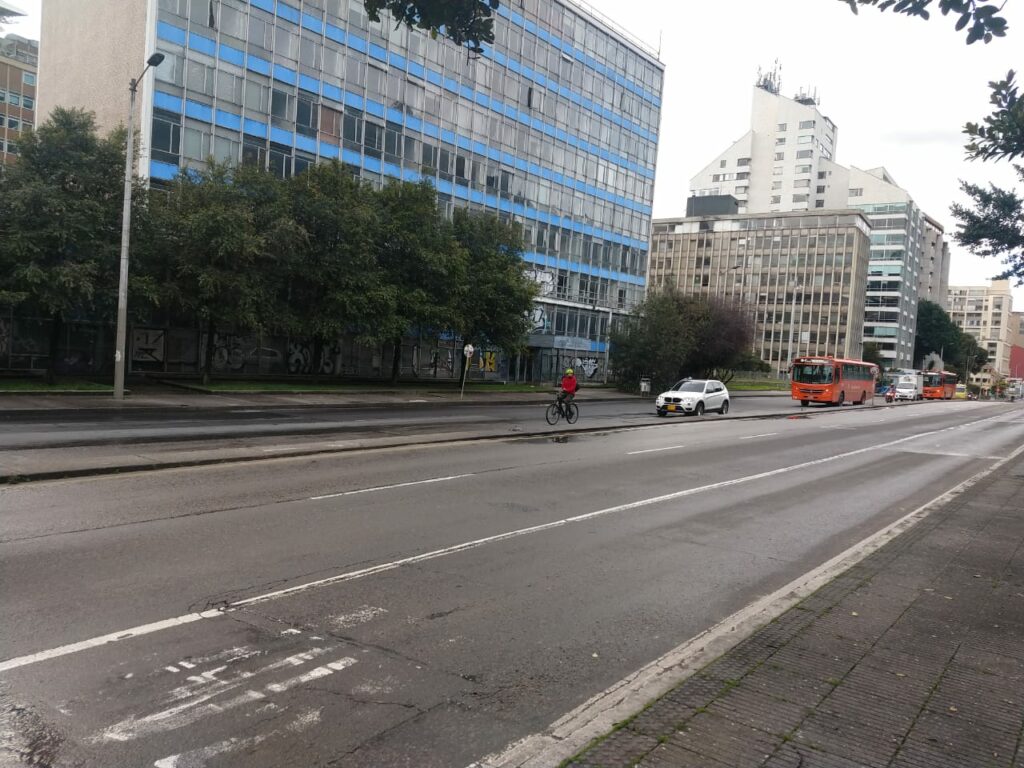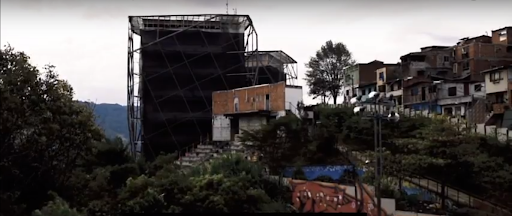Cone, but not forgotten: the strange case of Séptima’s invisible cycle lane.

Claudia López has an unfortunate habit of making promises that end up not being entirely completed. ESMAD has been as active as ever, new TransMilenio routes are breaking ground and pico y cédula is nominally active. Her quarantine measures are much more impressive on paper than they are in real life, with widespread disobedience – notoriously, even she has broken her own rules.
Will the same thing happen, then, with the ciclorutas? The measures were brought in temporarily to help lighten the load on public transport, widely recognised as a coronavirus danger zone. Cities worldwide are looking towards bicycles as green alternatives to public transport, and Bogotá is no exception. With a relatively high level of infrastructure in place, the world-renowned ciclovía and a population very receptive to bicycles, things looked rosy and the mayor duly announced that the new cycle routes would be made permanent.
So far, so good, and cones went up to demarcate the area for bicycles. Commuters flooded in and it looked to be a roaring success. Every day as I crossed on my morning run, there were plenty of cyclists and cars didn’t even seem particularly angry about having less space. Worryingly though, no paint was laid. I put this down to pressing priorities elsewhere and celebrated the focus on cycling. Then last week, the cones disappeared.
Read our latest coverage on the coronavirus in Colombia
On the Séptima, the cicloruta has, for some unclear and probably boneheaded reason, been put in the middle of the road. This is a bad decision on a number of levels and there are many good reasons why other countries have never seriously considered this model. For starters, it’s hard to get on and off a centrally-located bicycle lane. And that’s exactly what happens here – the cicloruta runs down from the north past the Javeriana until the Parque Nacional, where it crosses calle 39 and abruptly stops.
This leads to a really confusing situation where cyclists whizz down at relatively high speed only to find themselves suddenly trapped with three lanes of traffic between them and the pavement as cars and large vehicles pull into their lane to make a left turn across them. For an inexperienced cyclist taking to two wheels because of the pandemic, this must be quite a frightening position to be in.
I spoke to an Alcaldía worker hanging around at the junction, who claimed the cicloruta still existed, just without cones. He didn’t see any need to try and enforce it though, or to try and avoid the potentially disastrous situation up the road. In his words, he was “following instructions”. That’s what Nazi war criminals say. Maybe it does exist, maybe paint trucks will arrive to formalise the lane. But maybe it won’t. After all, this does happen here.
It’s a sadly common trope in Colombia to see things appear on paper and then not materialise in reality. Like some Orwellian nightmare, we are told something is happening despite the evidence in plain sight. It was somewhat surreal to be told that the cicloruta in fact still existed even as I saw buses and trucks pull into that space.
There are now major doubts about the ability and desire of the mayor to bring plans to fruition, so cyclists of Bogotá have good reason to fear that these ciclorutas might go the way of pico y género and be quietly scrapped. Let’s hope that López doesn’t live up to her nickname of Fraudia this time.





